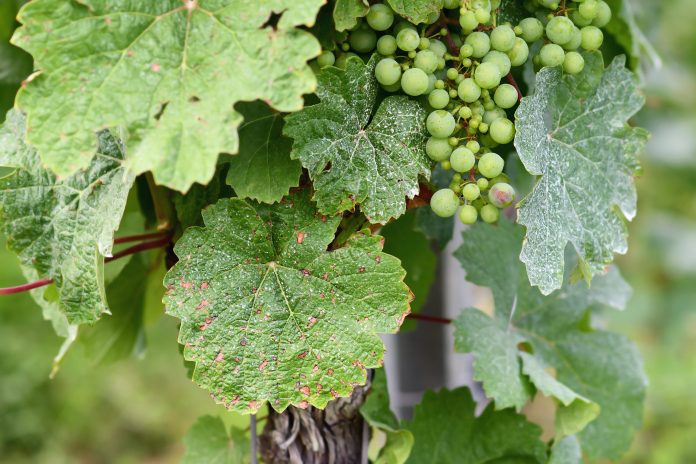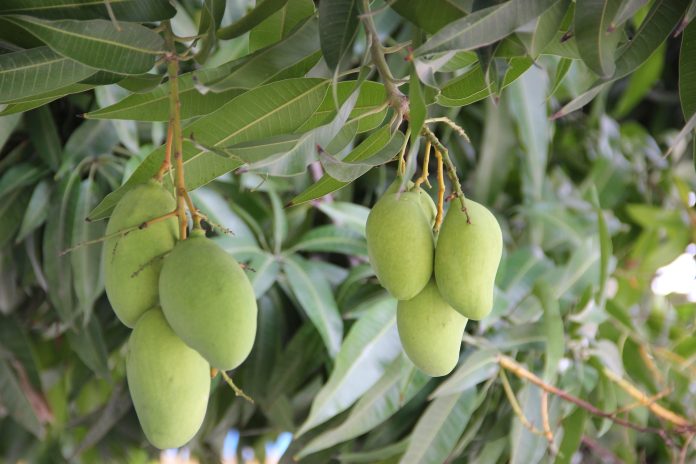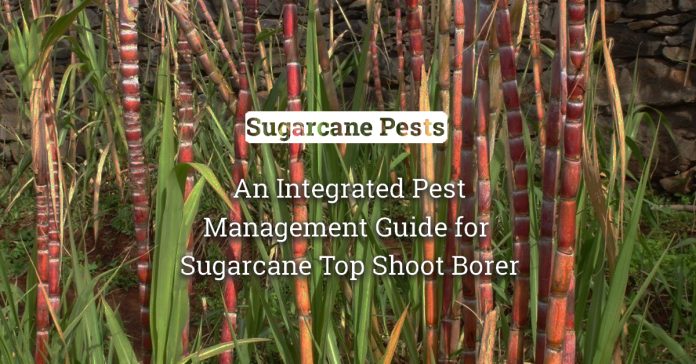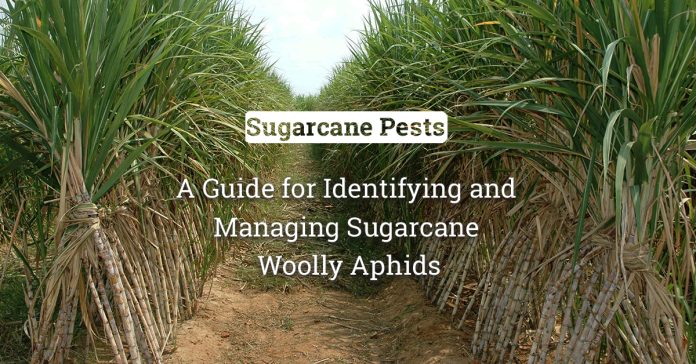Are you eager to cultivate mouthwatering mangoes that will have everyone craving for more? Look no further! Cultivate this flavorful fruit that will give you consistent, bountiful harvest season after season.
From selecting the right mango varieties to understanding optimal planting techniques and implementing effective irrigation strategies, we will dig in into every aspect of cultivation practices. Whether you’re a seasoned mango grower or just starting out, this article will equip you with invaluable knowledge and empower you to take your mango cultivation skills to new heights.
Climate
Mango is suitable for tropical and sub-tropical climates. Temperature of about 24 – 30°C are ideal for growing mangoes. High humidity and cloudy weather during flowering can adversely affect pollination, fruit set and can also promote the development of diseases. Avoid planting in areas prone to strong winds, as they can result in the shedding of flowers and fruits, as well as the breakage of branches. Dry weather prior to blossoming will promote profuse flowering.
Soil Requirement
Ideal soils for mango cultivation are alluvial and sandy loams. These soils should possess specific characteristics: medium texture, deep (2 to 2.5 meters) and well-drained, with a low water table (below 1.8 – 2 m in all seasons). It can grow in slightly acidic soils (pH 6.0 to 7.5) but cannot tolerate high soil salt content. So, avoid planting in saline or alkaline soils.
Discover the Perfect Mango Varieties to Grow in Your State
| Major mango producing states |
Varieties |
| Andhra Pradesh |
Banganapalli, Totapuri, Neelam, Suvernarekha, Bangalora |
| Bihar |
Bathua, Dashehari, Fazli, Langra, Himsagar, Bombay green, Gulab Khas, Kishen Bhog |
| Gujarat |
Kesar, Alphonso, Rajapuri, Langra, Dashehari, Vanraj, Neelum |
| Karnataka |
Neelum, Banganapalli, Pairi, Alphonso, Totapuri, Mulgoa, Bangalora |
| Telangana |
Alphonso, Banganapalli, Neelam, Mulgoa, Suvarnarekha, Dashehari, Imam Pasand |
| Maharashtra |
Mulgoa, Rajapuri, Gulabi, Vanraj, Pairi, Kesar |
| Orissa |
Langra, Neelum, Amrapalli, Suvarnarekha |
| Tamil Nadu |
Neelum, Banganapalli, Mulgoa, Alphonso, Bangalora |
| Uttar Pradesh |
Dashehari, Bombay Green, Langra, Chausa |
| West Bengal |
Himsagar, Fazli, Gulab khas, Amrapalli, Mallika, Kishen Bhog |
Propagation
Mango can be commercially propagated by vegetative methods. Popular methods such as inarching, veneer grafting, side grafting and epicotyl grafting are widely practiced for its propagation. To ensure successful field establishment, select grafts that are one year old, healthy, and have a straight growth pattern, with a minimum of 4 whorls of leaves and strong graft union from a reliable source.
Planting Season
Plant the mango grafts during the monsoon i.e., June to July in rainfed regions. In case of heavy rainfall areas, plant at the end of monsoon (September).
Plant Spacing
Adopt a spacing of 10 m x 10 m in drier regions with limited growth, to 12 m x 12 m in areas with heavy rainfall and fertile soil, where there is ample vegetative growth. For high density planting, plant at 5 x 3 m or 5 x 2.5 m or 3 x 2.5 m or 2.5 x 2.5 m spacing.
Planting
Prepare the land by engaging in deep ploughing, followed by harrowing and levelling the surface with a gentle slope to ensure good drainage. Dig out pits of 1m x 1m x 1m size. Fill the pits with 25 kg of FYM mixed with topsoil and 2 kg of Single super phosphate (SSP). Add 100 gm of Folidol powder in order to avoid termite attack.
Then, take out the plant from the polythene bag or pot with the earth ball undamaged. Place it in the center of the pit and press the moist soil all around the earth ball/root ball. Ensure that the graft joint is above the ground level. Irrigate immediately after planting and stake them for straight growth and prevent wind damage.
Manures and Fertilizers
The table below gives the detailed fertilizer recommendation depending upon the plant’s age;
| Age of the Mango Plant (Years) |
Dosage per plant per year |
| FYM (kg) |
Urea |
Single super phosphate (SSP) |
Murate of Potash |
| 1st year |
5 |
200 gm |
300 gm |
160 gm |
| 2nd year |
10 |
450 gm |
630 gm |
340 gm |
| 3rd year |
15 |
650 gm |
1.25 kg |
500 gm |
| 4th year |
20 |
870 gm |
1.9 kg |
660 gm |
| 5th year |
25 |
1.10 kg |
2.5 kg |
840 gm |
| 6th year |
30 |
1.3 kg |
3.12 kg |
1 kg |
| 7th year |
35 |
1.5 kg |
3.12 kg |
1.15 kg |
| 8th year |
40 |
1.75 kg |
3.12 kg |
1.3 kg |
| 9thyear |
45 |
2 kg |
3.12 kg |
1.5 kg |
| 10th year onwards |
50 |
2.2 kg |
3.12 kg |
1.7 kg |
Important points to remember for fertilizer application
- Apply the above recommended dosage of fertilizers in 2 split doses i.e., half of the dose of urea, SSP and MOP can be given during monsoon (June – July) while remaining half of the dosage can be applied during the end of monsoon (October), FYM can be applied fully during start of Monsoon (June).
- Apply the fertilizers through placement method in circular trenches around the trunk. For trees of more than 10 years age, apply fertilizers 1.5 m away from the trunk.
- Spray Tapas Pusti All Plant Nutrient Mix (0.25 gm/lit water) to correct the micronutrient deficiency and also helps plants for better absorption of water and other minerals (NPK) from soil.
Inter-cultivation
Why do you need to wait for your mango trees to mature when you can witness early profits in your orchard. With the strategic use of intercrops, you can make your profits bloom right from the start.
Intercropping can be done during the pre-bearing age (5 – 6 years). Short duration crops such as vegetables and legumes, dwarf fruit crops such as guava and papaya can be raised as intercrops in the alleys depending on the agro-climatic factors of your region. Cultivate sunflowers to attract honeybees and increase pollination and fruit set.
Training and Pruning
Remove the crisscrossing, diseased, weak and dried branches, 3 feet above the ground level using pruning saw to ensure good sunlight and aeration. Prune the internal branches of the trees in your orchard during August to September, once in 3 years. Trim the weak shoots among crowded terminal shoots and retain only two healthy shoots during August to September annually.
Irrigation
Check the irrigation schedule for your mango orchard from establishment to bearing stage.
| Plant’s Age |
Irrigation interval |
| 1st year |
2 – 3 days |
| 2 – 5 years |
4 – 5 days |
| 5 – 8 years |
10 – 15 days |
| Trees of full bearing stage |
2 – 3 irrigations after fruit set |
Do not give irrigation during monsoon months. To ensure optimal flowering in bearing trees, discontinue irrigation at least two months before the flowering period. This deliberate cessation of irrigation induces stress and promotes the formation of flower buds. If possible, it is advisable to employ a drip irrigation system for watering.
Weed Control
Unlike other crops, weed establishment is not a major problem immediately after planting the mango. During the initial years, you can do hand hoeing depending on the weed growth. During the pre-bearing stage (if you didn’t grow any intercrops) and bearing stage of the mango orchard, give 2 ploughing in the interspaces in the beginning and end of monsoon. Additionally, you can also plough the interspaces in the last week of November to control the mealy bug population.
Plant Growth Regulators
Fruit drop, Malformation and Irregular bearing are most common problems in mango orchard. It may be caused due to nutrient deficiency, moisture stress and hormonal imbalance. Pick out the plant growth regular product that helps you to tackle these problems,
| Product name |
Dosage |
Features |
Time of Application |
| Ethrel
(Ethephon 39% SL) |
1 – 2.5 ml/lit of water |
Breaks alternate bearing tendencies. |
1st spray: Mid Oct to Early Nov. Give 5 sprays at fortnightly interval |
| Induces flowering. |
Give 5 sprays at weekly interval, starting from early November |
| Planofix
(Alpha Naphthyl Acetic Acid 4.5% SL) |
0.2 ml/lit of water |
Prevents shedding of flowers, buds and fruits.
Helps in enlarging fruit size, increasing and improving the quality and yield of fruits. |
Spray twice at 15 days interval when the tender fruits are pea sized.
To prevent malformation, give one spray 3 months before flowering. |
| Cultar
(Paclobutrazol 23% SC) |
For trees < 10 years age: 8 ml/tree
For trees > 10 years age: 16 ml/tree (In both cases, apply to the root zone) |
Induces regular bearing and enhances fruit quality (color, size, maturation and yield). |
Three months before flowering. |
| Al Sach NPK 13:00:45
(KNO3) |
5 gm/lit of water |
Induces flowering, increases fruit set and size |
Spray during February and then when the fruits are of mustard size |
Get to know the strategies for managing mango flowers to boost your yield – click here
Top Working
If your current mango variety is underperforming or if you desire to introduce a more desirable or commercially viable variety to your orchard, “Top Working” is an excellent option for you.
By implementing this technique, you can transform your existing mango trees into a new variety with improved characteristics and maximize the potential of your orchard. Remove the upper part up of the tree to a height of 1.5 meter during Aug – Sept. Allow 4 – 5 vigorous shoots to grow from the remaining portion. Perform veneer grafting on these shoots of pencil thickness. After successful grafting, remove any shoots from the original seedling tree and prune the new shoots to encourage branching. Protect the young shoots arising from the grafts for optimal growth.
Harvesting
Depending on your specific mango variety and region, you can harvest mangoes from March to June. Graft plants will start to bear fruits at 3 – 4 years of age and they will give optimum yield from 10 –15th year.
| State |
Major Mango Harvesting Season |
| Maharashtra |
April – June |
| Uttar Pradesh |
June – July |
| Gujarat |
May – June |
| Andhra Pradesh |
April – June |
| Tamil Nadu |
April- June |
| Karnataka |
May- July |
| Bihar |
May – July |
| West Bengal |
June – July |
| Odisha |
May – July |
| Madhya Pradesh |
May – June |
The optimal time for harvesting mangoes is when they have achieved their full size, allowing them to develop the distinct taste and flavor associated with their particular variety upon ripening. Typically, mango fruits reach maturity within a span of 90 to 120 days from the point of fruit set. There are specific criteria that can help determine the fruit’s maturity:
- Look for signs such as the rounding of the vertical edges of the fruit and the emergence of a pink blush or red color.
- When one or two ripe fruits fall from the tree naturally without any external force, it signifies that they have reached the desired level of ripeness.
Use a hectare mango fruit picker to harvest the fruits with stalk to prevent quality loss during ripening and storage.
Post Harvest Treatment
Submerge the freshly harvested mango fruits in hot water at a temperature of approximately 52°C ± 1°C for a duration of 5 minutes. Follow this with an application of 8% plant wax, such as Fruitox or Waxol, to minimize the risk of anthracnose disease during storage. Additionally, applying two sprays of Mancozeb (2 gm/liter) prior to harvest will help reduce the incidence of disease. For uniform ripening, you can dip mature fruits in the Ethrel solution once.
Plant Protection Practices
While knowing planting methods and intercultural practices are crucial, it’s important to recognize that the ultimate key to a truly abundant yield lies in effective pest and disease management. Don’t let your hard work go to waste. Equip yourself with the knowledge on their symptoms and control measures to safeguard your mangoes and secure a thriving harvest like never before.
Pests
-
Mango Hoppers:
Symptoms: They feed on twigs, flowers and leaves and the affected tissues turn brown, deform and later dry up. Affected flowers fail to develop affecting the fruit set. They cause sooty mould development as they produce honeydew.
Management: Spray Metarhizium anisopliae (2 ml/lit water). Spray Actara Insecticide (0.5 gm/lit water) or Tatamida SL Insecticide (1 – 2 ml/lit water)
-
Mealy bug:
Symptoms: Presence of cottony, white or grayish masses of mealybugs can be seen on leaves, twigs and fruits. They feed on the plant sap, causing stunted growth, leaf yellowing and wilting. The presence of honeydew excreted by them promotes the growth of sooty mold.
Management: Spray Neem oil (1 – 2 ml/lit water) and Beauveria bassiana (2.5 ml/lit water). Spray Sivanto Bayer Insecticide (2 ml/lit water) or Actara Insecticide (0.5 gm/lit water).
-
Fruit fly
Symptoms: Female fruit flies puncture the fruit skin and lay eggs. Once the eggs hatch, the maggots consume the fruit pulp, causing decay and rot. Gummy exudations can be seen on the infested fruit’s surface.
Management: Use 6 – 8 Tapas fruit fly pheromone trap per acre. Spray neem oil (2.5 – 3 ml/lit water) at regular interval. Spray Ekalux Insecticide (2 ml/lit water) or Decis 2.8 EC Insecticide (1.5 ml/lit water).
Check out our article on Fruit fly Mangement in Mango to get a complete insight – Click here
-
Leaf webber:
Symptoms: The caterpillar scrapes the chlorophyll content of leaves and causes webbing of terminal leaves. Later, the affected leaves dry up.
Management: Spray Katyayani Chakrawarti Insecticide (0.4 ml/lit water).
-
Stem borer:
Symptoms: Small entry holes on the stem or branches, made by adult borers when laying eggs. The larvae then tunnel into them, causing internal damage. This leads to wilting, yellowing and stunted growth of the affected parts. Sawdust-like frass can be seen near the entry holes which indicates its presence.
Management: Apply Copper oxychloride paste on the tree trunk.
-
Mango Nut Weevil
Symptoms: The adult weevils bore into the mango fruits and lay eggs inside. The developing larvae feed on the fruit pulp, resulting in rotting and premature fruit drop.
Management: Spray Decis 2.8 EC Insecticide (1.5 – 2 ml/lit water) or Confidor Insecticide (0.8 – 1 ml/lit water).
-
Scale insects
Symptoms: Nymphs and adults suck the sap from the leaves and other tender parts of the plant, thus reducing its vigour. They also secrete honeydew causing sooty mould development.
Management: Spray Keefun Insecticide (2 ml/lit water) or Katyayani Acepro Insecticide (0.5 gm/lit water).
-
Flower Gall midge/Inflorescence midge
Symptoms: Maggots penetrate into the flower buds by making holes and feeding on the inner content. Affected buds fail to open and fall off. Affected inflorescence is stunted and malformed.
Management: Spray Tafgor Insecticide (1.5 – 2.5 ml/lit water) or Reeva 5 Insecticide (2 ml/lit water).
-
Shoot borer
Symptoms: Inside the shoots, the larvae create tunnels, causing damage to the inner tissues. This damage often leads to wilting and dieback of the affected shoots.
Management: Spray Ekalux Insecticide (2 ml/lit water).
Diseases
-
Anthracnose
Symptoms: It causes dark, sunken lesions on various parts of the mango tree, particularly on the fruits. These lesions may initially appear as small spots and gradually enlarge in size. The affected areas become soft, decayed, and may exude a sticky substance. Affected fruits rot,
Management: Spray Pseudomonas fluorescens (2 – 5 ml/lit water). Spray Cuprina fungicide (1 gm/lit water) or Turf fungicide (1.5 – 2.5 gm/lit water).
-
Powdery mildew
Symptoms: It primarily affects mango leaves but can also infect flowers and fruits. It appears as a white powdery growth on the leaf surfaces, leading to leaf distortion and reduced photosynthesis. Severe infections can cause defoliation and affect fruit development.
Management: Spray Geolife recover nutri (0.5 – 1 gm/lit water) and Spray Sultaf fungicide (2gm/lit water) or Merivon fungicide (0.2 ml/lit water).
-
Die back
Symptoms: It is characterized by the progressive wilting, drying, and death of branches or sections of the tree. The affected twigs and branches give ‘scorching by fire’ appearance to the tree. Leaves turn brown, roll upwards and later fall off. Bark will show dark discoloration.
Management: Prune the twigs 2 – 3 inches below the infestation and then spray Copper oxychloride (2 gm/lit water).
-
Bacterial Canker
Symptoms: It starts as small, black, water-soaked lesions, which later develop into typical cankers. They become angular, raised, and surrounded by chlorotic halos, Cankerous lesions appear on leaves, petioles, twigs, and young fruits. Water-soaked lesions on fruits darken, often bursting open and releasing gummy ooze containing bacterial cells.
Management: Spray Borogold Bactericide (1.5 gm/lit water) or Cristocycline Bactericide (0.2 gm/lit water) or Copper oxychloride (2gm/lit water).
-
Red rust
Symptoms: It is characterized by small, raised pustules on the mango leaves. These pustules have a rust-colored appearance and contain fungal spores. They may also be seen on petioles and bark of young twigs.
Management: Give 2 – 3 sprays of Bordeaux mixture (0.6%) or Copper oxychloride (2 gm/lit water).
-
Sooty Mould
Symptoms: Presence of black sooty mould on the leaves due to honey dew creation by mealy bug, hoppers and scale insects. If the mould is present on the entire twig and leaves, the tree may appear completely black.
Management: Spray Benmain fungicide (2 gm/lit water). After that, use starch solution for spraying. It can be prepared by boiling 1 kg of Maida/starch in 5 liters of water. Then dilute to 20 liters and use it for spraying. Spray Actara Insecticide (0.5 gm/lit water) to control the sucking pests which cause sooty mould development.
Healthy Flowers, Healthy Profits: Know how to Manage the Pests and Diseases in Mango Flowers – Click here















